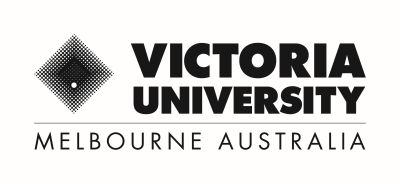A research team at Victoria University is exploring using granules made of disposable coffee cups as a substitute for sand in concrete.
A coffee catch-up was all it took for Victoria University researchers to realise the waste material they needed to produce sustainable building products was already in their hands.
“I’m a structural engineer and lecturer in built environment, so coffee and concrete are two things I really love,” says Dr Yanni Bouras, Lecturer at the College of Engineering and Science, Victoria University.
“A few of us met up at a cafe to explore options for waste materials. We ended up looking down at our cups and thinking, ‘Why not?’”
The team had been searching for a suitable high-volume, readily-available waste material that had not been researched as much as glass, rubber or recycled concrete aggregates. After initial tests on a range of other waste materials including used mattresses and cardboard, disposable coffee cups had all the properties they were looking for.
According to Sustainability Victoria, on an average day in Australia more than 2.7 million disposable coffee cups are thrown out. While the plastic lids are recyclable, the cups themselves are typically made from a paperboard product that includes a low-density polyethylene layer. That layer prevents the cups from being compostable or easily recycled without significant effort or additional processing.
In 2020, the coffee cup recycling project as well as 24 other projects received part of $1 million in funding from Victoria University as part of its whole-of-university commitment to protecting country.
The commitment calls for the university to deliver vital research with learning components that help create future leaders. It also includes an emphasis on staff and students making sustainable choices on campus and engaging their communities to find innovative solutions to complex environmental challenges – such as the use of sand in construction.
A sandy cuppa
Sand is the most mined commodity on earth, and while demand for mineral-rich sand has tripled, only riverine, coastal and marine sands are suitable for concrete. Finding alternatives for the sand used in concrete will help preserve these environments from further mining that can lead to erosion or changes to waterways and habitats.
To process the coffee cups, the research team first rinsed them to remove any organic material. They are then fed through a granulator to create granules that are three millimetres in size. The team explored various ratios for the mixture, ranging between 10 and 20 per cent of coffee cup granules to sand. They then tested their compressive strength, material and thermal properties.
While the early results have been promising, there are some limitations with the signature blend of coffee cup concrete. As more granulated material is substituted for sand, the overall strength of the concrete is reduced. On the other hand, there is an increase in its thermal resistance.
“While our concrete wouldn’t be suitable for load-bearing or industrial applications, it could be used to replace the concrete used in paths and walkways,” says Dr Bouras. “The higher thermal resistance of the coffee cup concrete mix could also help improve the thermal performance of buildings when used externally or even as insulation panels.”
Another positive outcome of the research was that it found this concrete mix was sustainable in other ways.
“Our coffee cup concrete mix will not only reduce the demand for mined sand, it also reuses a common waste material and reduces the amount of carbon emissions in the production process. The thermal and sustainable properties of our concrete mix make it a suitable solution for industry across a range of applications.”
The research team brings together academics across civil engineering and built environment disciplines including Dr Yanni Bouras, Dr Malindu Sandanayake, Dr Rudi Van Staden, A/Prof Paul Joseph and Prof Zora Vrcelj. They continue to conduct life cycle assessments, experiment with alternate mixes and additives, and uncover further commercial applications across the building and construction industry.
Discover more about the projects and industry opportunities with Victoria University’s College of Engineering and Science.
